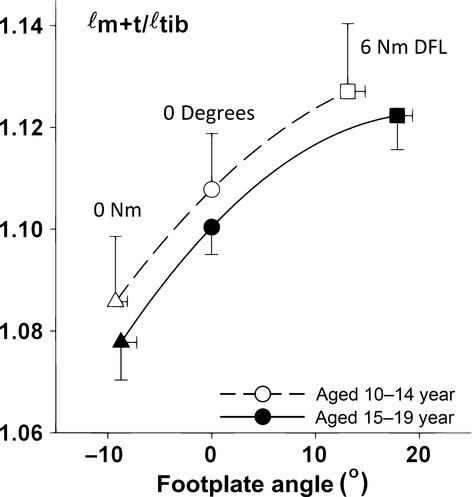Fig 3.

Test for the effects of age on potential effects of foot deformation on footplate angles. It has been shown by Huijing et al. (2013) that deformation within mid- and forefoot potentially contributes to changes in dorsal flexion footplate angle. This would cause differences in muscle–tendon complex lengths when compared at equal angles. However, differences in tibia length between the youngest and oldest participants (see also Fig.2c) would create similar inequalities that should, however, be removed after normalisation for tibia length. Mean values and SE of muscle–tendon complex length normalised for tibia length (ℓm+t/ℓtib) are plotted as a function of footplate angle. Footplate angle is presented as the deviation from its value with the tibia bone perpendicular to the footplate. At footplate angle = 0 °, ℓm+t/ℓtib did not differ (P = 0.59) between the younger (10–14 years) and older subjects (15–19 years) of the adolescent group. Therefore, we have no indication that potential contributions of deformation of fore- and midfoot at dorsal flexion footplate angles change as a function of age.
